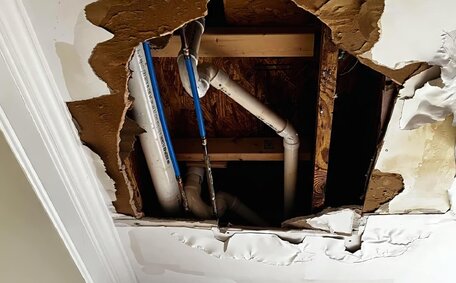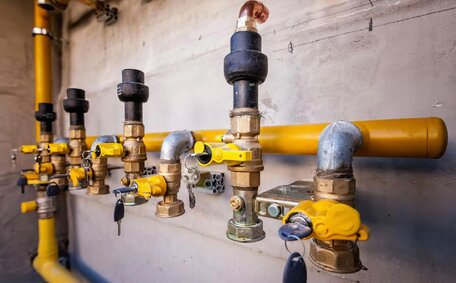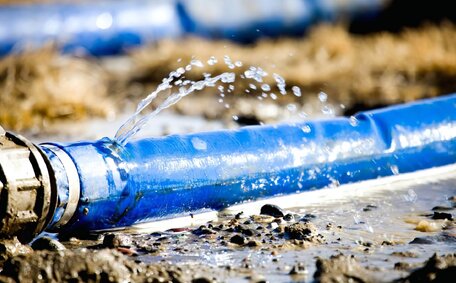The Early Beginnings of Drainage Systems
For millennia, drainage systems have played a pivotal role in the management of water resources. Early drainage designs, with their baked clay bricks and strategic channels, set the foundation for modern drainage networks, redirecting wastewater and runoff from living areas.
From the Indus Valley civilizations to developments in areas like Perth Amboy, drainage systems demonstrate a historical acumen in water management and sanitation. They helped to prevent flooding, dispose of waste, and protect public health as urban populations grew.
These early designs served as a template for the sophisticated sewer systems later devised by societies in Mesopotamia, Egypt, alongside the Yellow River Basin, and throughout Greece and Rome.
Drainage Systems in Ancient Civilizations
The ancient Romans advanced these developments notably, constructing a vast sewage system that remains an unparalleled engineering achievement, far surpassing the early efforts seen in regions such as Perth Amboy. The Romans leveraged robust materials such as lead pipes and cesspits to create efficient drainage basins that redirected sewage and waste away from populated areas.
The Romans pioneered the use of drainage pipes connected to flushing toilets, integral parts of engineered drainage basins, as part of an underground network flowing into proximate waterways. Facilities like public baths boasted advanced flooring solutions, incorporating drains that channelled drainage water with remarkable efficiency.
While ingenious, these early systems often discharged untreated waste into the environment and commonly used materials like baked clay and stone for pipe construction.
Ancient Greece further refined drainage systems, implementing stormwater management practices to preemptively curtail flooding in vulnerable areas. Simple terra cotta piping directed storm runoff, aiding our understanding of the effective water management strategies we know currently. Chinese cities along the early Yellow River employed defensive embankments and land drainage techniques, maintaining a controlled water level and ensuring safety by overseeing the water resources at the base level outside the city walls.
Stagnation in Drainage Innovation During the Middle Ages
After the fall of the Roman Empire, advancements in drainage systems entered a prolonged stagnant period during the Middle Ages. The decline of cities and urban planning led to a disregard for the advancement of public sanitation infrastructure.
During this period, plumbing shifted from being a widely-utilised engineering solution to a luxury commodity accessible primarily to the upper nobility.
Such stagnation in drainage had been linked to woefully inadequate public health and hygiene levels of that period.
In the absence of adequate waste removal systems, urban areas became hotspots for the outbreak of infectious diseases. Regrettably, there was a lack of awareness about the role of contaminated water in disease transmission. They continued using cesspools, outhouses, and direct waste disposal into streets or waterways.
Nonetheless, some monasteries and palaces maintained basic indoor plumbing using lead, hollowed logs, or stone conduits, as detailed by academic sources. The upper classes enjoyed flushing latrines and Roman-style baths, while the majority relied on rudimentary, unhygienic techniques. This highlighted the vast disparity of living conditions across social classes of the time which further stalled drainage advancements.
The Resurgence of Plumbing Advancements in Modern Times
The 19th century was a period where a significant resurgence in plumbing took place, catalysed particularly by the Industrial Revolution. Facilitated by swift urbanisation and heightened public health awareness, the expansion of civic drainage was marked by notable projects employing cast iron and lead pipes in cities including New York.
Indoor plumbing became more common during this period, overcoming the stagnation that had persisted over centuries. Urban water supply and drainage frameworks flourished with technological innovations where extensive networks were built reflecting sound engineering judgment, to burgeoning metropolises across the United States and other parts of North America. Innovations such as modern water closet toilets came about, spreading to regions including South Australia, South America, reflective of the global advancements in clean and functional infrastructure.
The turn of the 20th century witnessed a pivotal advancement in the establishment of subsurface drainage system networks, highlighted by London UK’s vast sewer network. In Chicago IL USA, innovation was rife with land reclamation improvement and drainage, with the reversal of the Chicago River’s flow direction benefiting the drainage agricultural lands by diverting excess water. The use of corrugated steel and clay pipes elevated agricultural water management, thereby transforming agricultural drainage into a practical element in infrastructure planning.
Contemporary knowledge, often shared at events like the international conference, from innovation hubs like Wageningen Netherlands, have influenced the widespread use of plastic pipes made of polymers like PVC and polyethylene in plumbing, celebrated for their durability and chemical resistance. As we can ascertain, modern drainage tactics sharply reduced public health hazards of the past.
Mechanised drainage machines, documented with acclaim in publications like Volume 2 pp of informed textbooks, spearhead large-scale drainage system excavations. Today, sensor systems in water science continuously monitor water flows and quality, with data accessible online to inform management practices. Computer analysis informs dynamic system adjustments, ensuring irrigation drainage maintains an appropriate relief ratio and is utilised efficiently.
The Environmental Impacts of Drainage Systems
Traditional drainage systems, as cited by the International Institute of Land reclamation and drainage, have posed numerous environmental challenges over time. These traditional systems have historically disrupted local ecosystems and water cycles by altering natural flows and destabilising drainage networks. Drainage infrastructure also paves the way for rapid stormwater runoff, exacerbating problems like flash floods, erosion, and aquatic habitat loss.
Moreover, numerous historical drainage systems, prior to the integration of suds, channeled untreated sewage and industrial waste straight into waterways, contaminating essential community resources. The accumulation of pathogens and toxins not only poses a threat to public health but also fosters algae growth, which depletes oxygen for aquatic life.
Fortunately, with stricter environmental protections, the development and integration of SuDS and WSUD into urban drainage systems ensure the sustainable release of clean water into the eco-cycle. Other innovations like low impact development tactics, stormwater capture and reuse programmes, along with green infrastructure help mitigate drainage systems’ ecological impacts. The future of sustainable urban water management, akin to vital life support systems EOLSS, lies in the wider adoption of drainage systems like SuDS that embody nature-based, climate-resilient solutions.
Sustainable Drainage Systems (SuDS)
Sustainable Urban Drainage Systems (SuDS), incorporating solutions for the slopes badlands Perth Amboy, take a sustainable approach to managing surface water drainage in urban areas. Inspired by natural drainage processes, SuDS, reminiscent of the classic french drain, aim to capture, store, infiltrate or treat stormwater onsite to mitigate downstream flooding and pollution risks.
Unlike conventional piped networks that quickly channel runoff into waterways, SuDS feature a suite of design strategies using vegetative channels and green infrastructure to manage water flows. This replication of nature’s filtration abilities, designed to collect water like natural aquifers, adopted in cities like Washington DC USA, prevents pollutants from reaching ecosystems while recharging groundwater reserves.
Properly designed SuDS deliver multiple benefits beyond flood control like:
- Enhancing water quality by filtering out hydrocarbons, sediment and dissolved metals
- Beautifying neighbourhoods with nature-based solutions like rain gardens and bioswales
- Reducing drainage infrastructure costs by decreasing peak volumes needing conveyance
- Boosting biodiversity by creating aquatic and riparian microhabitats
With climate change exacerbating extreme weather events, drainage systems, especially in sloping terrains, become increasingly crucial for sustainable urban strategies in places such as New Zealand.
The Future of Drainage Systems
Research points to increasing pressures on drainage systems from climate change, urbanisation, and the need for environmental sustainability. Emerging approaches shaping the future of urban water management include Water Sensitive Urban Design (WSUD) and the integration of water cycle management into urban planning.
WSUD champions a resilience-based agenda by integrating the principles of both SuDS and WSUD into a holistic approach to urban water management. It interweaves the entire urban water cycle, including potable supply, drainage, sewer systems, stormwater and groundwater, into city designs and renewal projects.
This approach endeavours to harmonise drainage infrastructure within the existing natural landscape. Blue-green corridors, climate adapted vegetation, water recycling systems, smart sensor technologies and community education programmes will likely feature prominently.
Long-term drainage planning and infrastructure upgrades must prepare for harsher flooding and droughts from climate change and rapid urban densification. Ameliorating drainage networks via green infrastructure, increased water capture and data-driven decision making will grow ever more critical.
Emerging drainage systems should incorporate nature-based solutions that offer a balance between liveability, environmental sustainability, and resilience. These systems’ societal contributions to urban management are significant, bolstering public health, environmental integrity, and adaptive responses to climate change.






